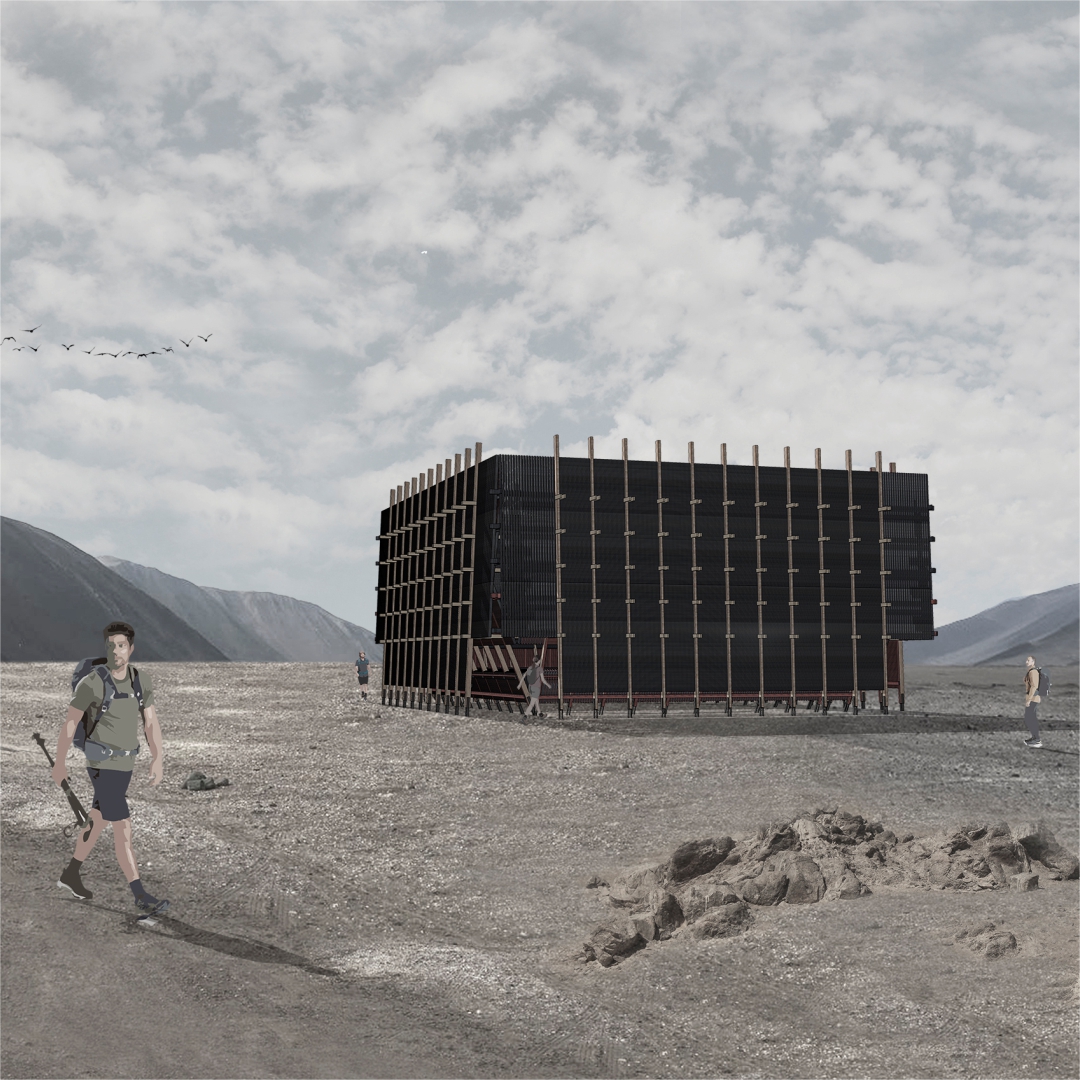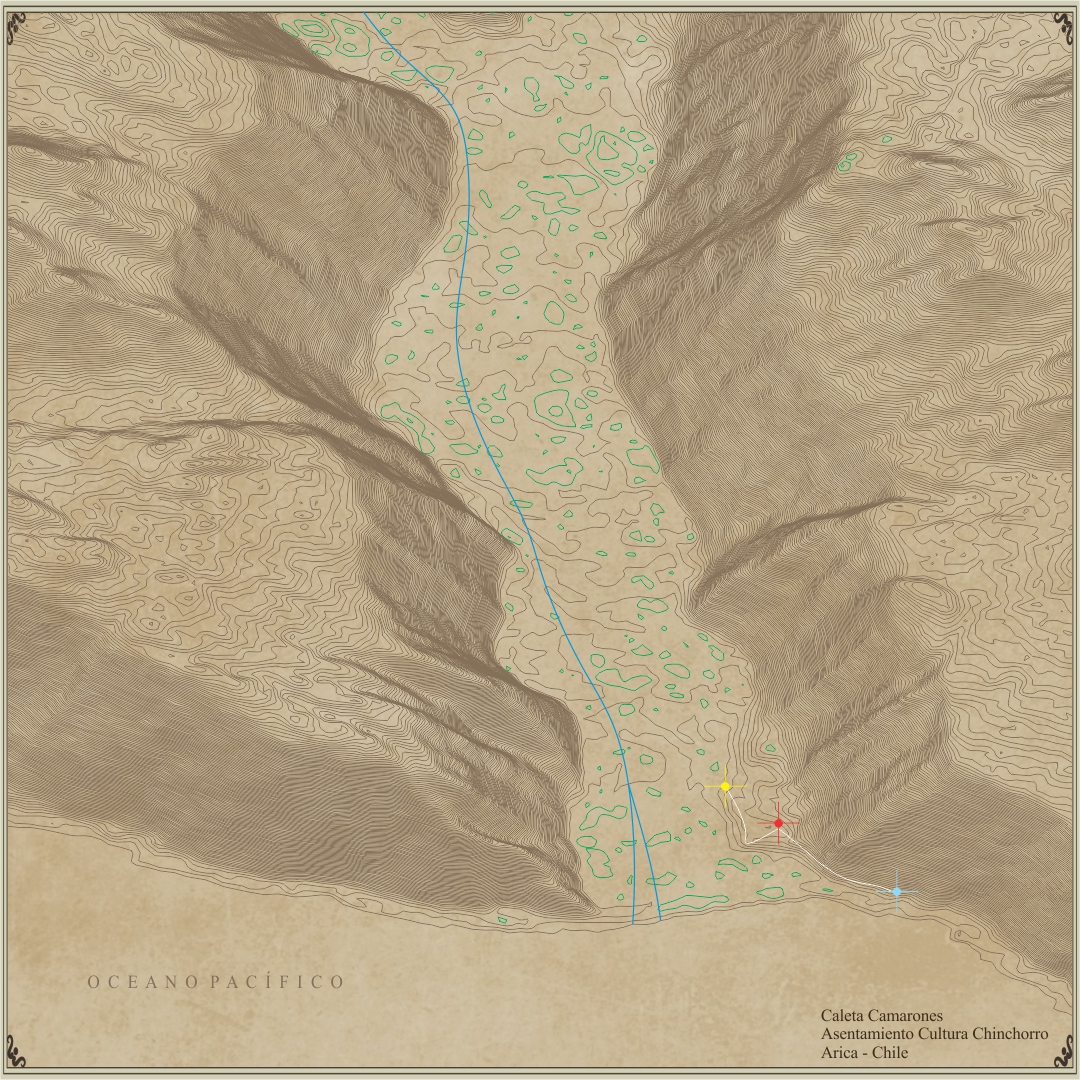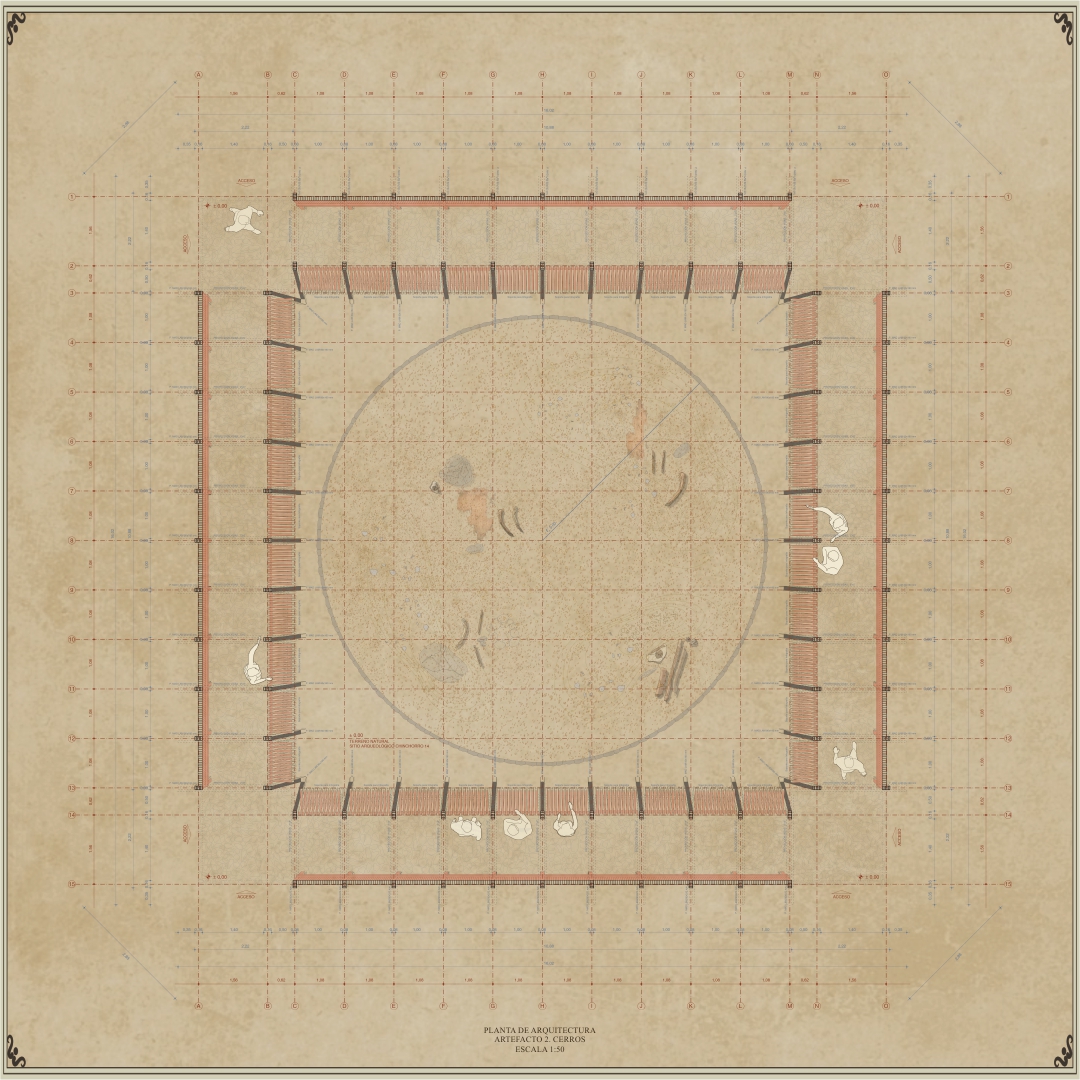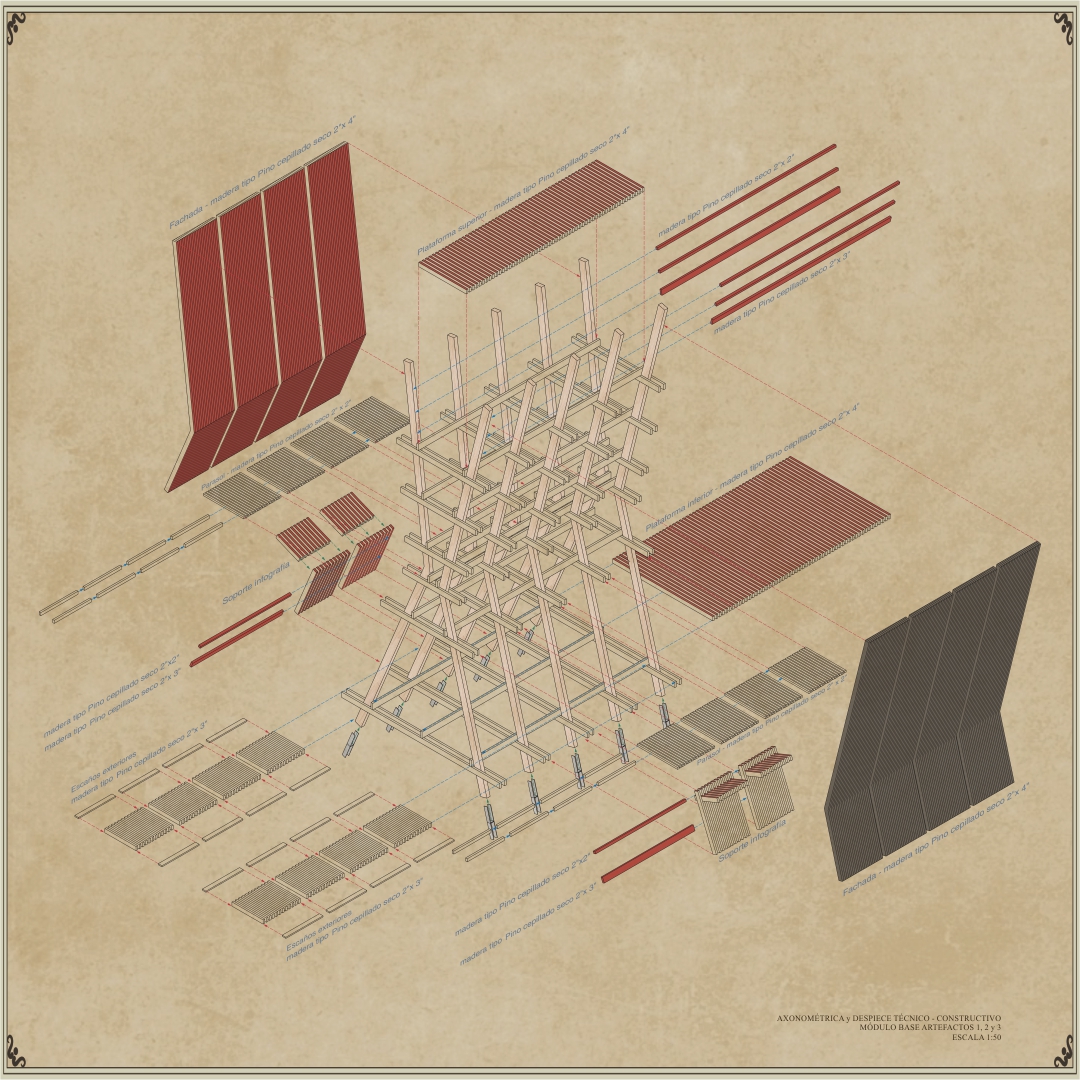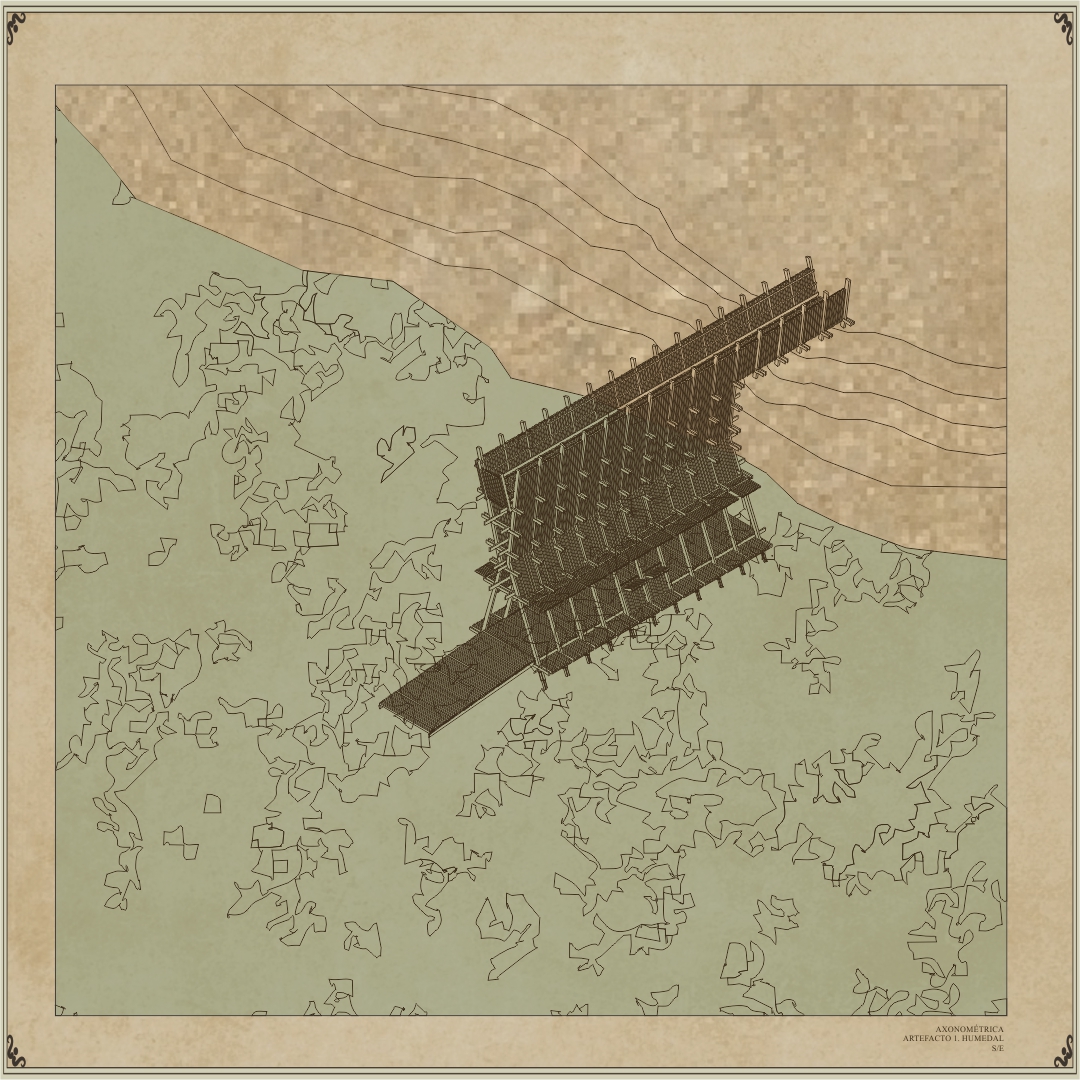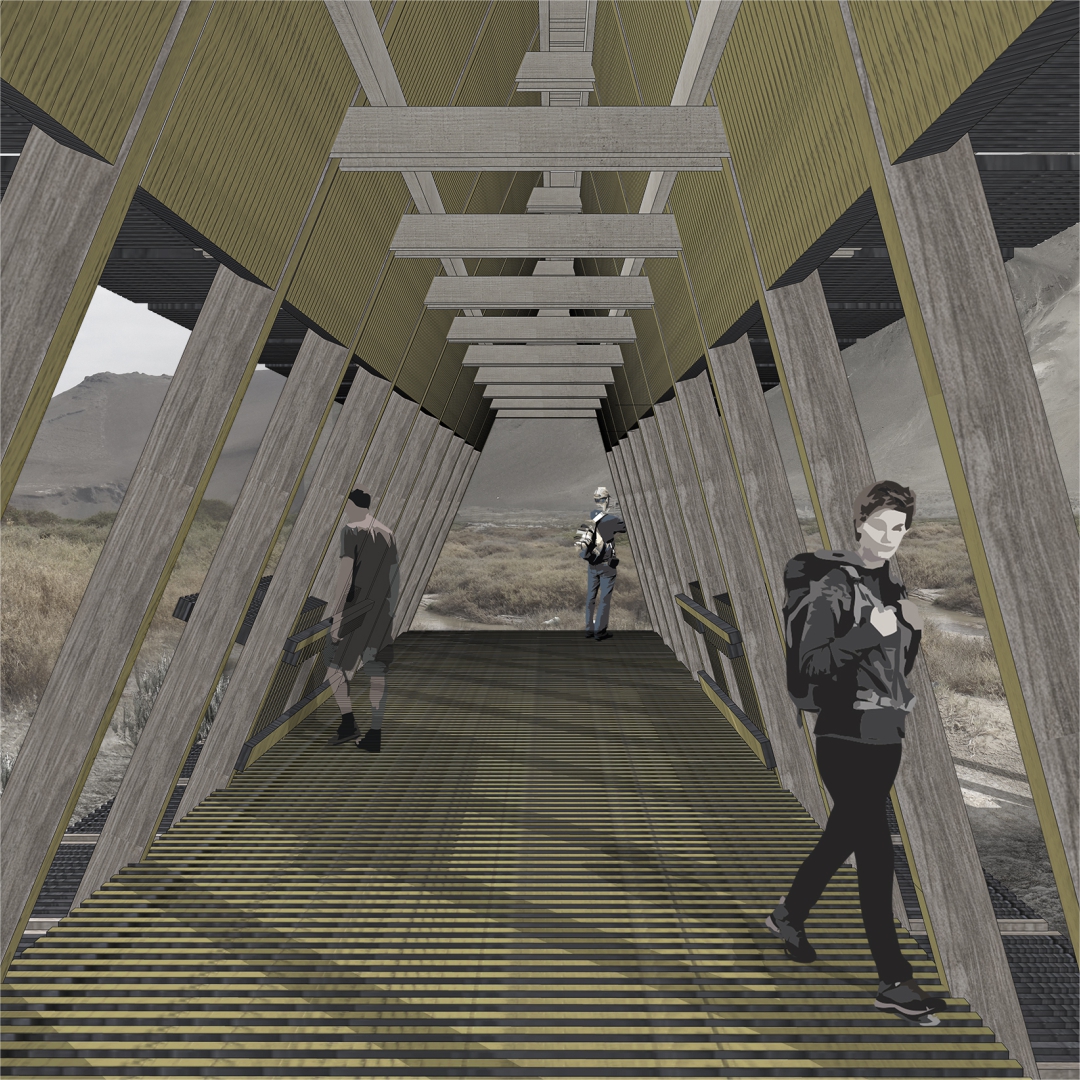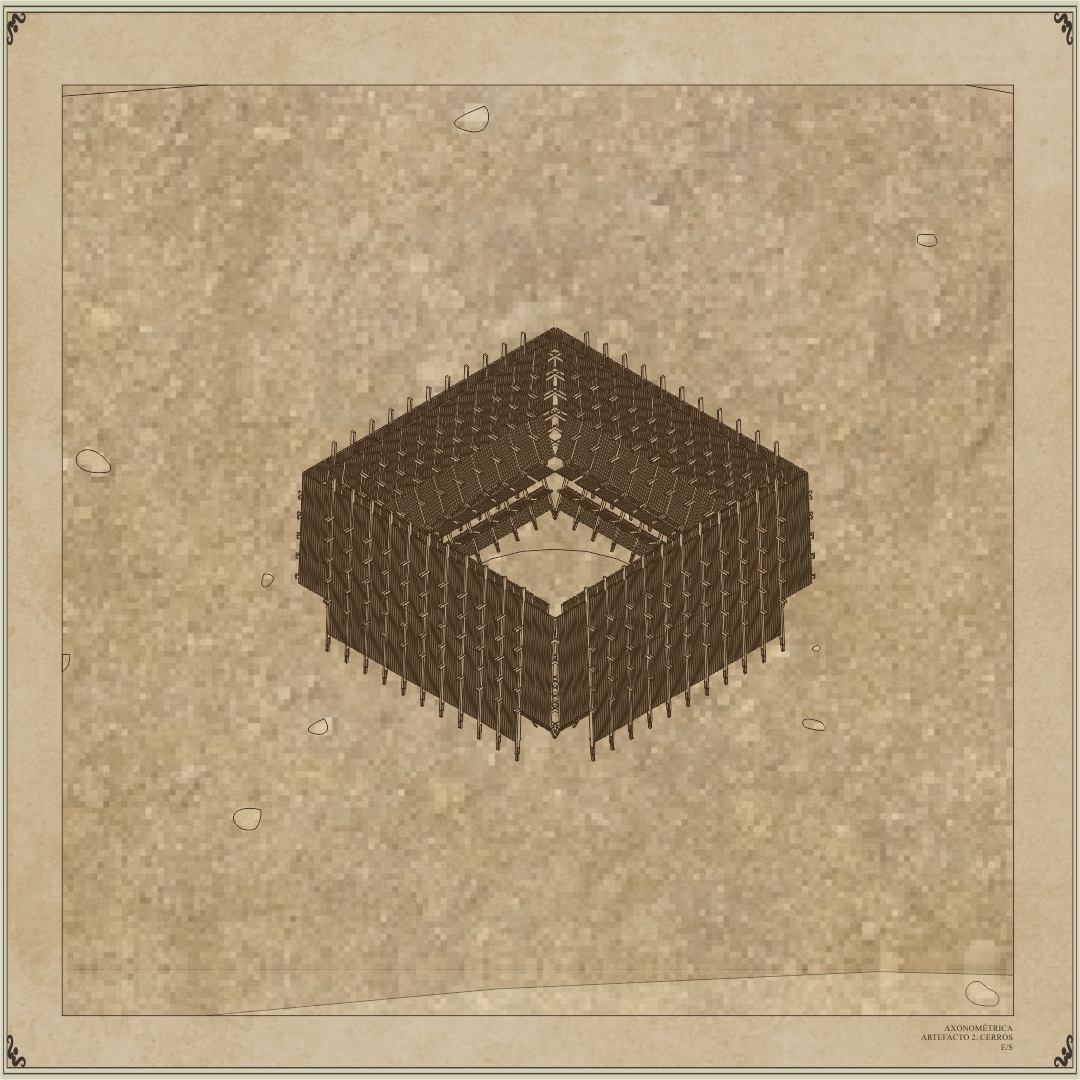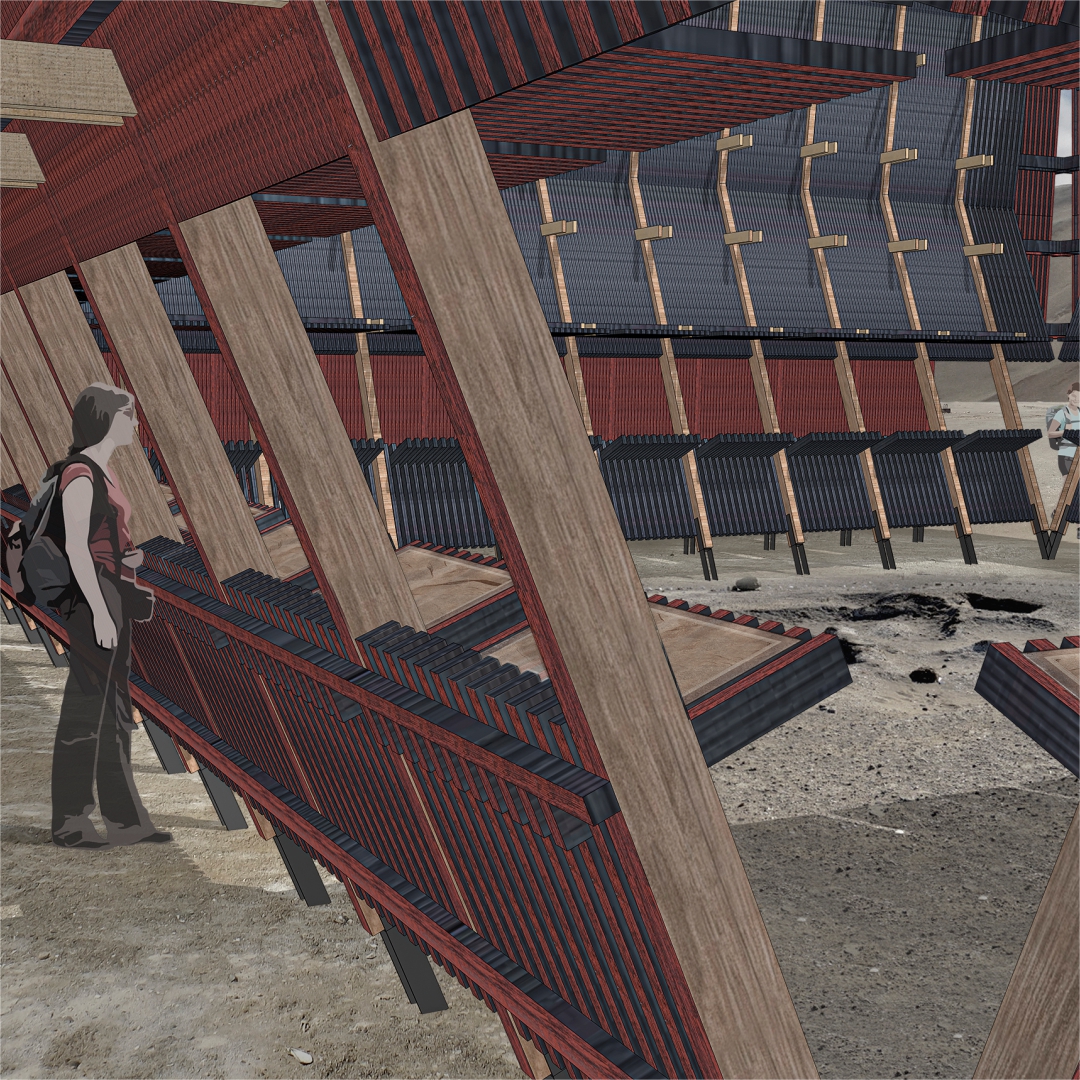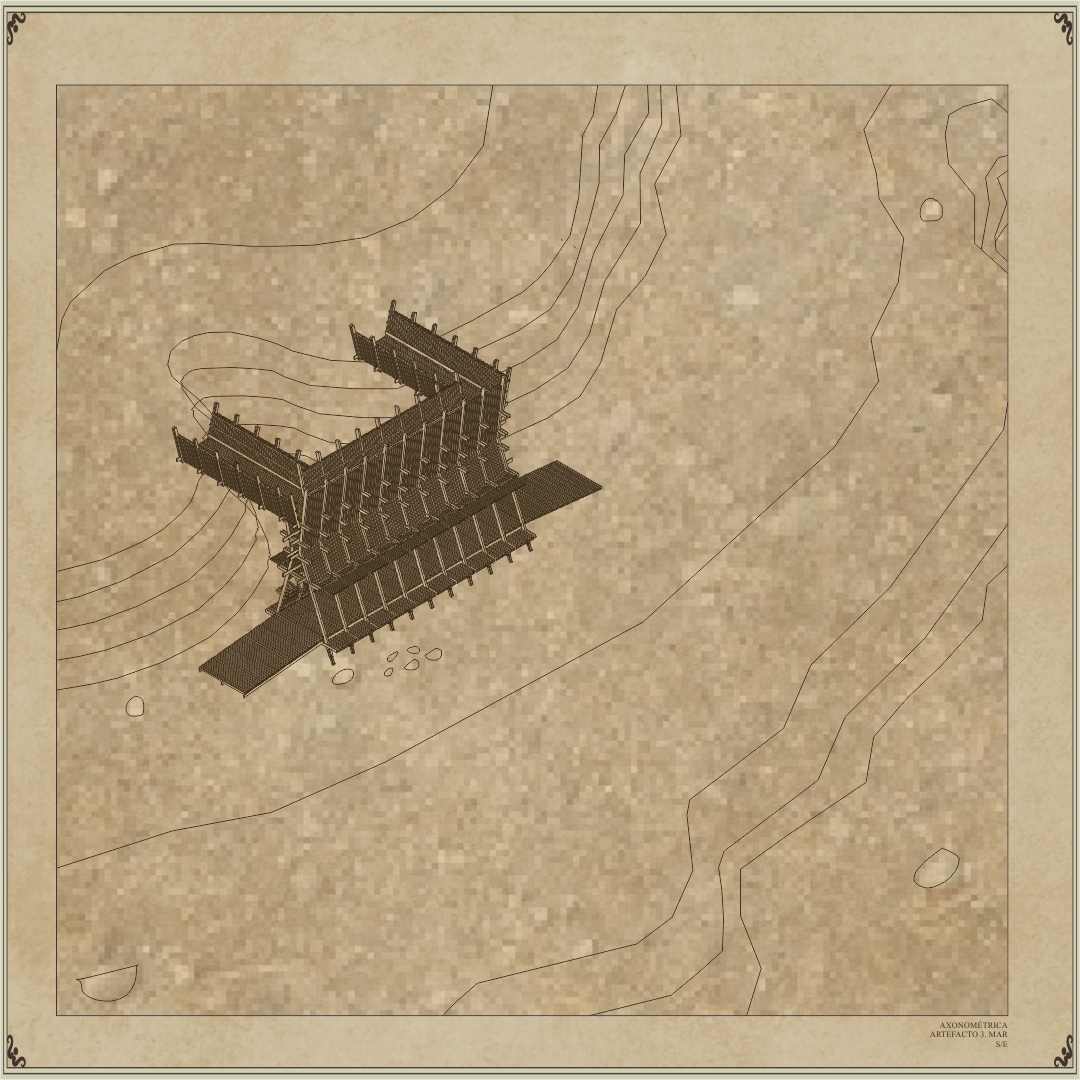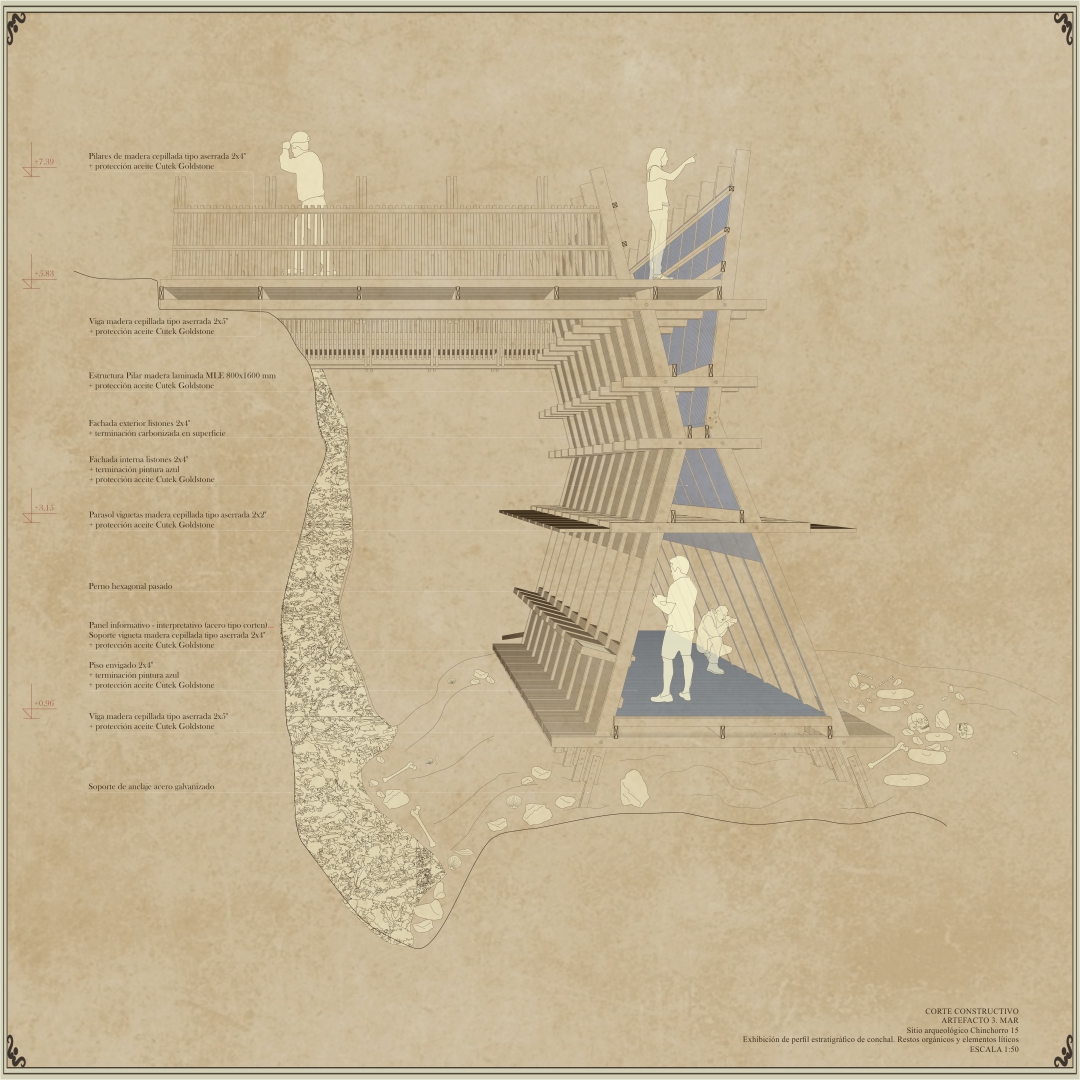Sebastián Palacios+Diego Moris+Carlos Ríos
Architectural interventions to safeguard and rescue the archaeological vestiges around the oldest mummies of the world, the Chinchorros.
The Chilean desert, even though it presents itself as a challenging territory to inhabit due to its climatic nature, allowed the settlement of some peoples throughout its extension, thanks mainly to its varied landscapes and climatic zones that are articulated through ravines and valleys.
In the territory of the extreme north of Chile, thanks to 4 narrow transversal ravines that run from the highlands to the coast and whose greenery contrasts with the extreme aridity of the desert, the region of Arica and Parinacota allowed this territory to stand out for its extensive pre-Hispanic occupation, which currently, through their vestiges, have become a great patrimonial wealth and have generated strong interest from various sectors, both of an investigative nature on the part of the archaeological discipline, which thanks and added to the salinity and climate of the region has allowed the conservation of archaeological remains, as well as tourists and/or unscrupulous visitors, known under the name of huaqueros, are dedicated to stealing archaeological pieces to later sell them and the inhabitants of the ravine, who express a strong identification and link with the history of the place.
One of these peoples that inhabited the area was the Chinchorro Culture, a group of collector fishermen who inhabited the coast of the Atacama desert between 5,000 and 1,500 BC. from Ilo, Peru, to Antofagasta, Chile. They established their nucleus in the current city of Arica and in the valleys of Lluta, Azapa, Vitor and Camarones. They stood out from other early hunter-gatherer groups because of their funerary rites: they were the first in the world to artificially mummify their dead.
The Camarones Cove is located as the site where the first and oldest vestiges of this culture have been found. However, and despite the great historical interest that this site has, the abandonment and lack of protection of the place has allowed the looting and destruction of the archaeological heritage, leading to the possible lack of value and meaning, added to the disconnection that occurs between archaeological heritage and territory, in which the interest is only limited to the exhibition and conservation of isolated objects and not to the territory where they are found. The recent declaration of this site as a UNESCO heritage site positions it as a place to be rescued, valued and reactivated in the Region. The helplessness of the archaeological remains overflowed by slopes and esplanades that today function as the location of a fishermen’s cove, warns that the fragility of the place does not correspond to its current treatment and that the dimension of the process of occupation of the territories poses the need to protect and value the natural conservation of the landscape to recognize nature as a connection space for our living in relation to it and that gives us the experience of the pulse of itself or of our own body.
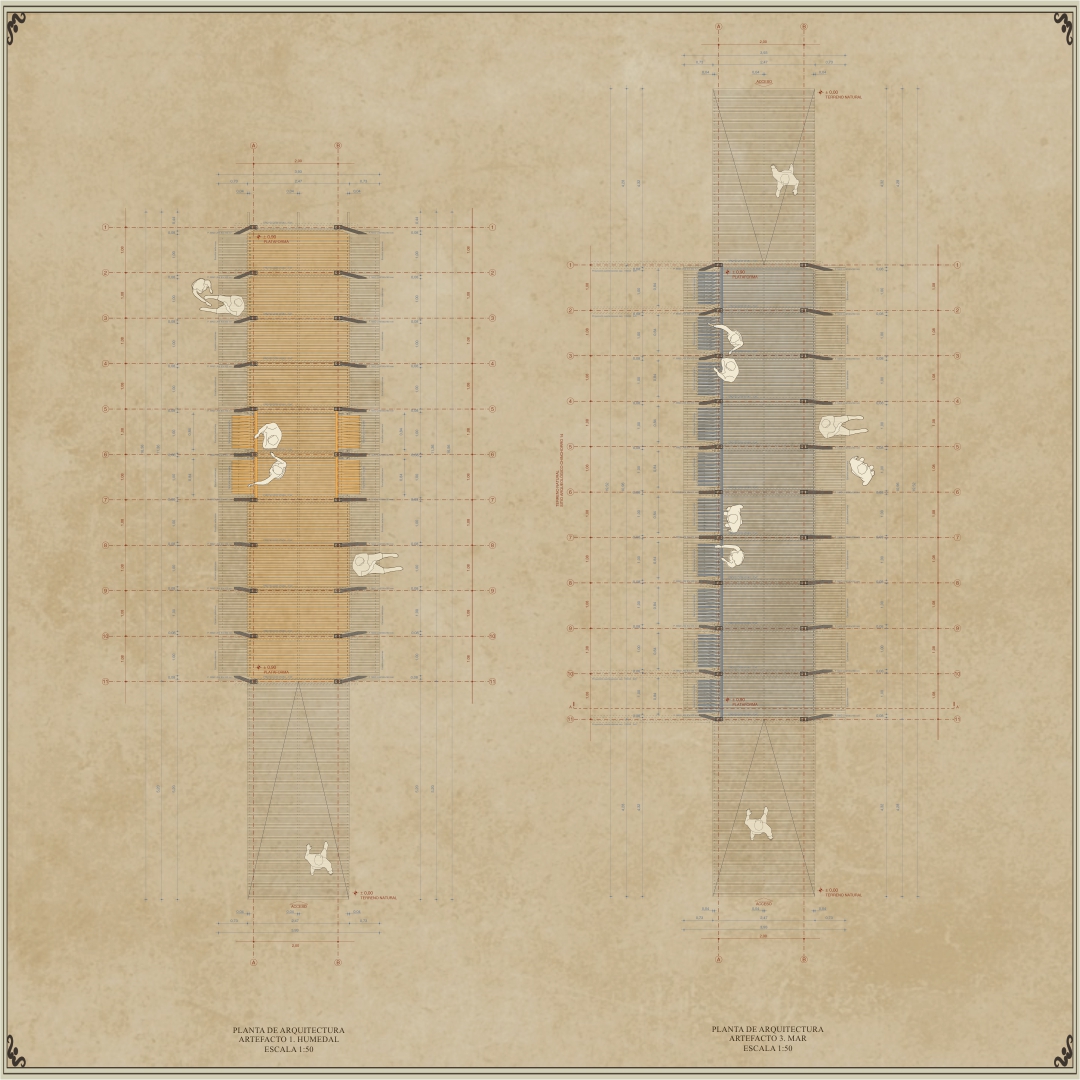
Having defined 3 macro elements of the landscape – wetland, hills and sea – together with the presence of vestiges, 3 intervention points are proposed at the mouth of the valley that generate a total reading of the complex. The first is carried out on the slope of the plateau, presenting a program linked to the wetland and allowing the revaluation and framing of archaeological elements of its context.
The second intervention is carried out around a funerary vestige in the middle of the plateau and linked to the hills that make up the southern end of the mouth, which also have archaeological artifacts and organic remains.
The last intervention as a viewpoint and refuge for the protection of a shell stratigraphic profile, in the area of the cliffs of the southern sector, is responsible for generating the link with the sea. It should be noted that the structural modulation is easy to assemble and move. In turn, it allows adaptation to different realities of the Chilean geography, such as fragile or hard soils, on slopes or plains, enabling and diversifying its programs: dissemination, exhibition, observation, rest, transit, etc., allowing adequate contact and protection of natural and cultural heritage.
Authors: Sebastián Palacios+Diego Moris+Carlos Ríos.
Location: Arica, Chile.
Year: 2021
Competition: Woodarch.
